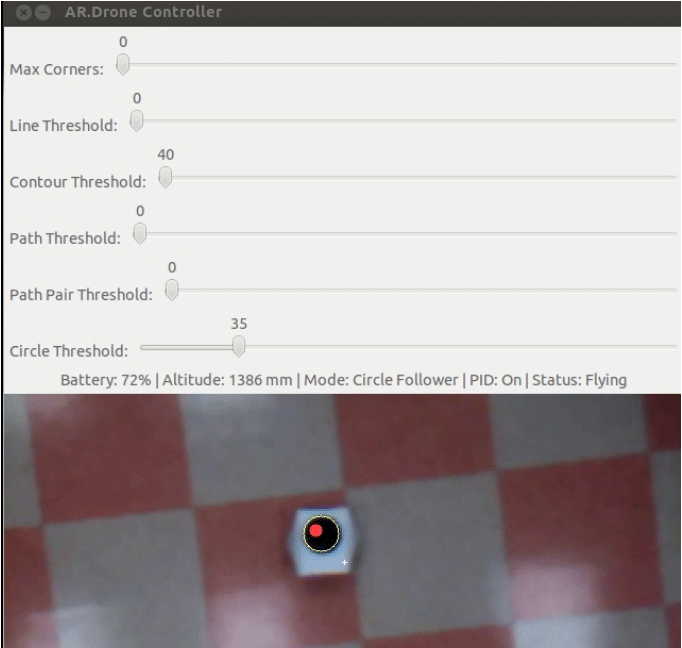Computational Human-Robot Trust Models
Human trust in robots is the central enabler in determining human's acceptance and hence utilization of robots and autonomy. To design intelligent robot motions such that the human partner will trust the robots, we develop computational trust models to capture the dynamic, probabilistic nature of trust and the casual relationship between human trust and its impacting factors. Our work includes time-series trust models, dynamic Bayesian network based trust models, artificial robot-to-human trust models, human-robot mutual trust models, and trust models for multi-robot systems. Based on the computational trust models, we developed trust-based shared tele-autonomous operation strategy for mobile robots, trust-based path planner and velocity control for robot manipulator, as well as trust-based multi-robot motion planning algorithms. We conducted robot experiments with humans-in-the-loop. The results showed that human acceptance in trust-based robot motion and control designs outperform conventional optimal algorithms. For more details, see our publications.
Control and Learning of Human-Robot Interaction
Despite advances in autonomy, human participation is still an essential component in most autonomous systems. Effective human robot collaboration requires in-depth, integrated understanding of human-robot interaction (HRI) and predictable system-level performance. We addresses control theory and deep reinforcement learning approaches for human-robot collaborative teams to provide a balanced human experience and guaranteed team performance.
Symbolic Robot Motion Planning with Humans-in-the-Loop

|
Symbolic robot motion planning is a powerful tool to synthesize veriably correct robot motion plans. Specifically, high-level robot motion planning based on temporal logics offers human-like lanuages to generate motion plans that are correct by construct. In this project, we seek to embed human factors analysis into symbolic robot motion planning techniques for guaranteed performance of the joint human-robot systems in real-time robotic operations. |
Human-Robot Collaborative Manufacturing

|
Recent developments in automation have enabled collaborations between human workers and industrial robots for manufacturing tasks that cannot be fully automated due to cost, space, and set-up time. This has opened a new realm of industrial mass production in real-world settings. However, improper HRI may cause misuse, overuse, or abuse of machine and/or safety issues. There arises an urgent need for investigating effective HRI in smart manufacturing. Our work includes human-robot collaboration in assembly in manufacturing using collaborative robots, cooperative manipulation using wheel mobile manipulators, and shared vision detection. We consider both physical and social HRI factors in the motion planning and control of industrial robots to show improved team performance. |
Regret-based Automatic Decision-Making Aids for Human-like Decisions
We create novel planning strategies incorporating mathematical models of regret, an emotion central to human rational decision-making. Regret-based automatic decision-making aids will provide more human-like decisions for more natural HRI. Our research features the development of a regret-based Bayesian sequential decision-making framework that selects between the manual and autonomous mode in a way such that suboptimal decisions will be made to avoid the possible regret of making a wrong decision.
Human-Aware Control and Decision-Making for Multiple Autonomous Systems


|
The best system capability results from the collaboration and interaction between humans and autonomous systems. For example, robot teams are able to search a wider area and identify a higher number of objects in a search and rescue task when control is shared between robots and humans than either exculsively autonomous or exclusively manual control. This project develops new dynamic models, cooperative control algorithms, and decision-making strategies for effective human-robot interaction in multiple autonomous vehicles. |
Design of Haptic Feedback Strategies within Human-Machine Interfaces for UAVs

|
The emergence of unmanned aerial vehicles (UAVs) for military, societal, and commercial activities represents a tremendous opportunity for air transportation systems. The remote control of UAVs requires the operator to combine aircraft maneuvering with situation awareness from available telemetry, sensory, and visual information. In particular, the development of efficient and capable haptic feedback strategies within the human-machine interface (HMI) can enhance system performance and reduce teleoperation errors. |
Control of Cyber-Physical Systems (CPS)

|
Connected and Autonomous Vehicles: CPS research entails the synergy of cyber and physical components and is critical to U.S. security and competitiveness. CPS provide significant benefits to society such as faster, higher quality manufacturing, autonomous swarm robotics, safer, greener personal/public transportation, the enablement of greater surgical skill for surgeons, and the ability to explore remote planets. |
Robotics and Automation for Pharmaceutical Manufacturing
Validation and Verification of Autonomous Vehicles








